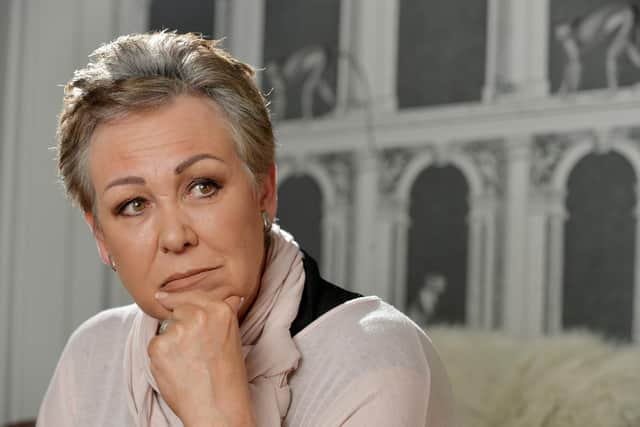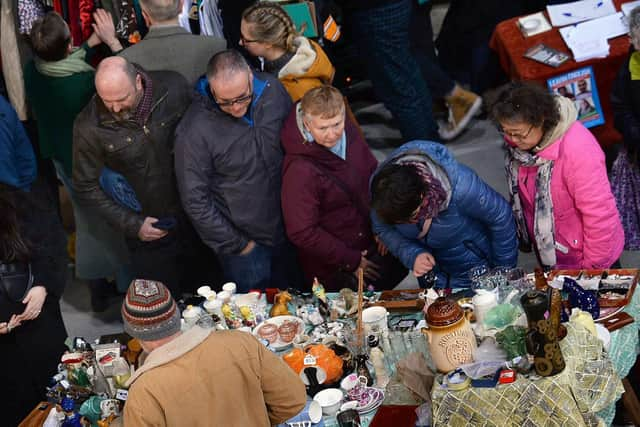A cathartic trip to London's Foundling Museum completed a circle - Christa Ackroyd
So many years have passed that the very phrase ‘junk shop’ has long since been replaced and items I was never afraid to call second-hand have now become vintage, pre-loved or reclaimed, which, with a bit of what my gran called titivating (now known as upcycling), could always find a place in my home.
But whatever they are now called, junk shops are still my favourite haunt. My first thought is always of those who bought, owned and loved the abandoned treasures you may stumble upon. And I am afraid my house is far too cluttered with ‘things’ I know nothing about which have just caught my eye and sometimes melted my heart. Each one with a story that for the most part remains untold. I now know the story of at least one. I just never realised it was so personal.
Advertisement
Hide AdAdvertisement
Hide AdOn that particular day in that particular junk shop, with less than £10 in my purse, I spotted a large, beautifully colour-washed Victorian print in a battered old frame of a group of girls with their hymn books wearing brown dresses with white aprons and caps. I fell in love with them. Their melancholy expressions spoke to me. After much haggling, and with the need to eat the following week, I persuaded the vendor to let me have it for £7.


It’s not everyone’s cup of tea. It is rather sentimental but ‘my girls’, as I have always called them, drew me in. For more than 40 years they have hung on the wall at every house I have lived in. Now they take pride of place in the bedroom reserved for my granddaughters, which is appropriate as there are four of them and four in the painting.
About three years ago, the old frame finally fell to pieces so I took it into my local framer for a new one. A chance remark remained etched in my brain when he told me of a place he had been where there were many photographs of such girls wearing the same drab brown uniforms. And so on Tuesday, armed with a photograph of my painting, I entered the Foundling museum in London, once a huge orphanage for the destitute set up in the 1700s which boasted Hogarth and Handel among its benefactors and whose charitable work for children in care continues today.
Our trip to London was sentimental in itself. A celebration of a significant birthday for my husband, who with the promise of a visit to Winston Churchill’s war rooms happily joined me on my adventure. I approached a volunteer and asked him to take a look at the photograph on my phone. Was it possible this was a painting of a group of Foundling girls? Without saying a word he led me to a room filled with mostly grand portraits of the great and the good who had helped the poor souls who found themselves abandoned there. And there it was, in pride of place, my painting, my girls, yes more vibrant than mine, but the very same.
Advertisement
Hide AdAdvertisement
Hide AdI love it when synchronicity happens. My painting was one of a number made from the original and sold to raise funds for the girls and boys taken by their mothers and handed over to the Foundling hospital with the promise of a better life.


They must have been desperate as they queued up to give their children away. There were 500 places a year and such was the demand that the mothers were forced to enter a lottery to see if their child would be admitted.
Once accepted, the only obligation was to leave a small token with their child, a button, a keepsake, with which to identify them if ever they were to be reclaimed. Only two per cent ever were. Instead they were renamed, sent to live in the country and taught a trade as an apprentice.
All that remained of their past were those tokens, a poignant reminder of the sacrifices made by women who had been forced to make that terrible choice and give away their child.
Advertisement
Hide AdAdvertisement
Hide AdAs I looked at some of those humble treasured last gifts, many caught my eye but one in particular moved me as much as the painting of my girls. It was a coin sawn in half, presumably the other half being kept by a mother who would never see her child again but had given him or her away in the hope of a better future.
Now I know why those girls spoke to me. As most of you know, I was 10 days old when I was adopted, given by a single mother to a Church of England home. Then the law demanded they left no trace as to who they were. There were no tokens, no contact and no chance of reclaiming their baby once the legal papers were signed. But my goodness, wasn’t I the lucky one? I found a perfect family and a perfect home. Unlike the girls in my painting.
We have come a long way since mothers were invited to leave their children with a token but the figures are still stark. On the wall at the Foundling Museum it reads: “Last year 34 per cent of those who left care were not in employment, education or training.”
It seems there is still work to be done. And kindness to be shown.
Advertisement
Hide AdAdvertisement
Hide AdMany of those tokens have now been matched with their mother’s names and for that I am glad. My visit this week was both cathartic and a reminder of the decision women in the Sixties were still being forced to make when they gave away their children because of the stigma of illegitimacy, as happened to me.
For now four girls on a bedroom wall where our little girls will sleep is enough. I am glad I found them at last at a former home for Foundlings. Circle complete.